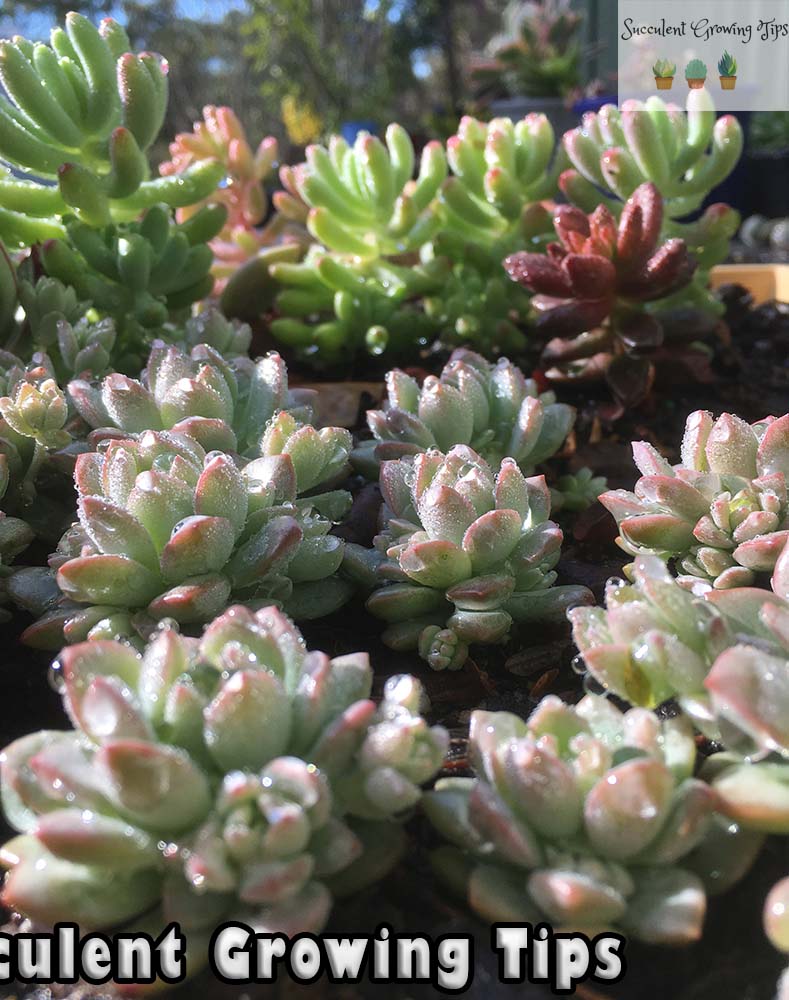Succulents are incredibly resilient and can tolerate conditions other plants struggle with. There is a wide range of temperatures succulents will thrive in, but some succulents are hardier than others.
Because so many different plants fall under the term ‘succulent’, it is hard to categorically state the needs of all succulents, so we are going to try and establish what works for the majority of succulents.
So are the majority of succulents cold hardy and what is the lowest temperature most succulents will cope with?
The majority of succulents are cold hardy but not very frost tolerant. They will survive temperatures to 0.5C (32.9F) but once the frost starts settling in at the freezing point (0C or 32F) many succulents may start getting frost burns.
In frosty weather the water inside succulents will begin to freeze. While mild frosts are unlikely to kill most succulents, once it starts getting to around -2C (28.4F) they can freeze and turn to mush very quickly.
This doesn’t apply to all succulents, and there are succulents (Sempervivum, Agave, some Sedum species, Orostachys and a few other cultivars from other genera) that will survive pretty harsh frosts. The great majority of succulents are better off being sheltered indoors or in a greenhouse if the weather gets frosty.
The succulents at our nursery (west of Sydney, Australia) are grown outdoors all year round. While it can get quite chilly at night and temperatures do get a bit a frosty, the frost never settles for long and rarely reaches below the -2C/ 28.4F mark.
Our more prized and touchy succulents are kept in a greenhouse over winter, but that is more to do with the rain as some succulents can get ugly spots on their leaves, fungal disease, mildew or rot if exposed to too much rain.
Cold also has some interesting effects on most succulents. The best and brightest colours start showing when temperatures fall below 10C (50F). The chill stresses succulents, and so they start growing a little more compact and very colourful. If you like Instagram or other social media (or the search engine of your choice) you can search #wintersucculents for some amazing shots of this transformation.
The best colours are achieved if the plants are also in a sunny spot. Below are some photos of plants that colour up for winter. These are usually much more pale and without the reddish tips and edges during the warmer months.
In mild climates like ours, succulents can pretty much stay outdoors year-round. In slightly colder climates where frosts to about -2C (28.4F) are quite frequent through winter and the odd blanket of snow falls (but doesn’t settle for long), succulents can still survive outdoors with the help of a frost cloth. This is a very light, white cloth that can be placed on garden succulents or large pots too heavy to be moved every time frost is forecast.
In cold climates, there are only a few succulents that will be able to survive the onslaught of winter. These are Agave, Sempervivum, some Sedum species and Orostachys. While there are sedum that will freeze (usually the chunkier types like Sedum Clavatum) the smaller leaved varieties should withstand frost.
If you’re growing succulents in a cold climate it is best they are kept in pots so they can be moved indoors or in a greenhouse when it gets too cold outside. The majority of succulents are not usually too keen on being indoors, and because of the lack of bright light, they may start stretching, losing leaves and rotting.
It is advisable to find the brightest window with as much sun coming through as possible. If you have rare plants in your collection, you may want to think about getting a good plant growing light which will imitate the sun’s rays. This will ensure the succulents won’t become too leggy.
In conclusion, succulents will be fine outdoors until the freezing point. If you are, however, worried about your plants or have expensive succulents, do protect them for a piece of mind.
